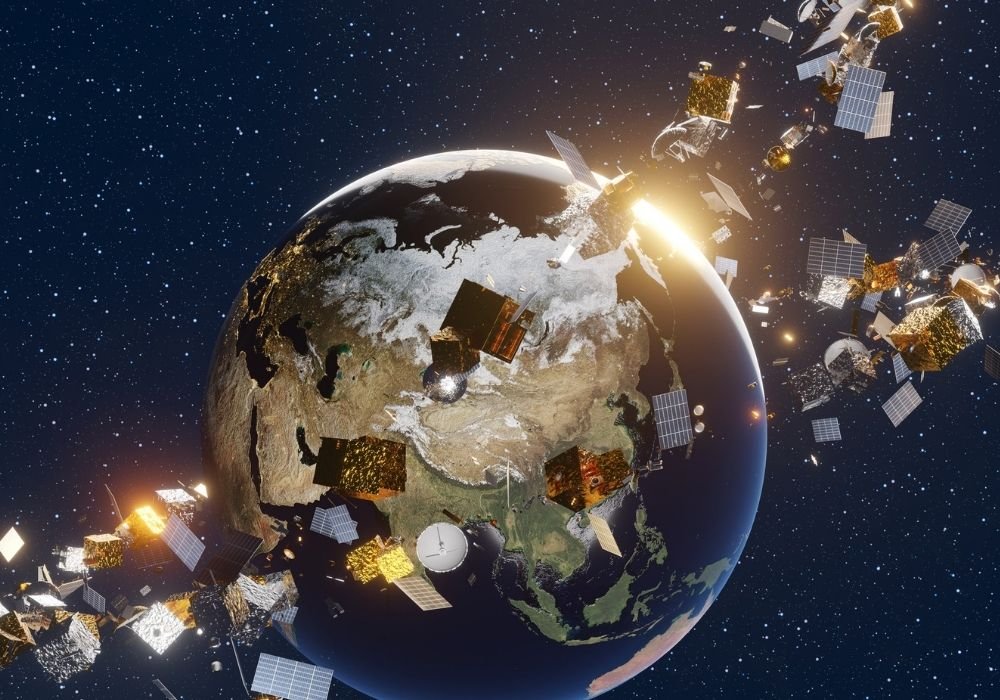A recent study published in the journal Science presented alarming data about the invasion in low Earth orbit (LEO): More than a million satellites are planned to reach this region of space, Currently home to tens of thousands of orbital objects, it is located below two thousand kilometers in altitude.
To arrive at this estimate, researchers from the University of British Columbia in Vancouver, Canada, analyzed recent data from registrations at the International Telecommunications Union (ITU), the United Nations agency responsible for licensing LEO for satellite deployment.
Satellites of the future, registered by countries around the world, are distributed among 300 mega constellations. Its effective installation would represent the current number of operational satellites multiplied by 115. Andrew Falle, lead author of the study, warned Space.com that “national and international rules will be needed” addressing relevant sustainability challenges such as collision risks, light pollution and re-entry risks”.
“Paper” satellites orbiting the Earth?
Researchers examining ITU records between 2017 and 2022 found that countries were demanding much larger constellations than SpaceX’s veteran Starlink, which currently has about 4,500 satellites in orbit. To give you an idea, a single constellation – Rwanda’s Cinnamon-937 – reflects a total of 337,320 artificial celestial bodies.
According to study co-author Ewan Wright, it wasn’t just these stratospheric numbers that caught the team’s attention, but also the fact that governments and companies were deliberately inflating bids. Well, requesting orbital space for many more satellites than they intend to launchthe researcher told Space.com.
This may be a clear indication that these private and public entities intend to take advantage of different regulations between countries in order to minimize regulatory oversight. “The more we analyzed the issues surrounding these constellations, the more we found that the ITU would have difficulty in meetings. [das demandas]Wright remarked.
New research says space debris is invisibly polluting Earth
Coincidentally, the study advocating ITU limitation of satellite recordings comes four days before a major discovery by researchers from the US Oceanic and Atmospheric Administration (NOAA). They discovered this, It even burns when re-entering the Earth’s atmosphere, “Dead” rockets, space stations and satellites leave tiny traces of metal that pollute our atmosphere.
Using Particle Analysis with the Laser Mass Spectrometer (PALMS) instrument on NASA’s WB-57 aircraft, the team found that approximately 10% of aerosols in the stratosphere were above a certain size. retained vaporized spacecraft particles. This event may have unknown effects on ice debris and nucleation, natural processes that regulate the formation of clouds, and affect climate and the environment.
The study concludes that with the dramatic increase in atmospheric reentry events, “the percentage of stratospheric sulfuric acid particles containing aluminum and other metals resulting from satellite reentry will be comparable to roughly 50% of those currently containing meteoric metals.”
Follow current developments in science and technology at TecMundo. If you wish, take the opportunity to learn what will happen if a special piece of garbage falls into your home.
Source: Tec Mundo
I’m Blaine Morgan, an experienced journalist and writer with over 8 years of experience in the tech industry. My expertise lies in writing about technology news and trends, covering everything from cutting-edge gadgets to emerging software developments. I’ve written for several leading publications including Gadget Onus where I am an author.













